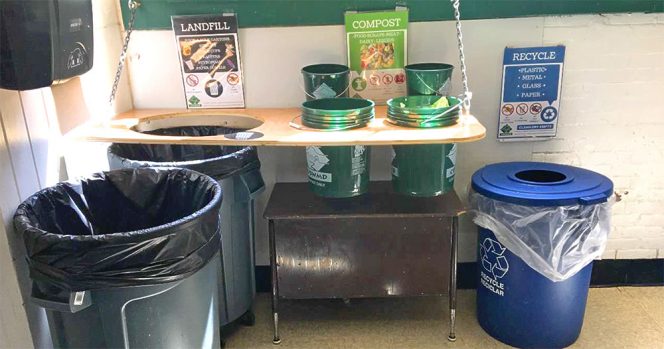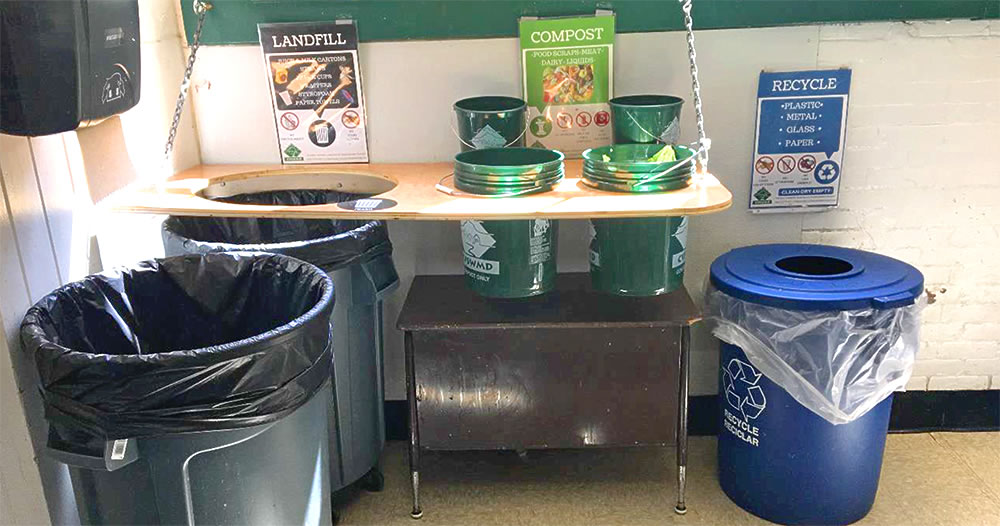 School Food Recovery Act
School Food Recovery Act
U.S. Rep. Chellie Pingree (D-Maine) introduced the bipartisan School Food Recovery Act (H.R. 5607) on Jan. 16, along with Congressman Dan Newhouse (R-Wash.) and Congresswoman Suzanne Bonamici (D-Ore.). The bill will create a new grant program at the U.S. Department of Agriculture (USDA) to support schools working on food waste reduction projects. “One in five kids in Maine doesn’t have enough to eat, while schools and universities generate more than 7 million pounds of food waste every year,” said Pingree. “The school system offers a tremendous opportunity for students to think outside the box, reduce hunger, and cut greenhouse gas emissions. This bill will help ensure school meals feed children, rather than ending up in landfills.”
Schools would be eligible if they participate in the National School Lunch Program or the School Breakfast Program. Eligible grant activities would include food waste measurement and reporting, prevention, education, and reduction projects, including purchasing equipment and providing training. The federal grants would not exceed 75 percent of the total cost of the project. A recent World Wildlife Foundation report found that national food waste in schools could amount to approximately 530,000 tons (excluding milk) per year (close to 40 lbs/student/year), costing as much as $1.7 billion. The food wasted by American schools subsequently contributes an estimated 1.9 million metric tons of greenhouse gases into our environment.
Collective Adoption Of Sustainable Behaviors
In a new study published in the journal One Earth, researchers at the International Institute for Applied Systems Analysis (IIASA) in Laxenburg, Austria explored how collective behavior patterns emerge systemically as a product of personal, social, and environmental factors. Using an agent-based model — a computational method for simulating interactions between individuals and environments — the study illustrates how personal aspects like attitudes and habits, social networks, and available infrastructure shape the way sustainable behaviors are collectively adopted. The study especially emphasizes the environmental aspect by examining how changes in opportunities to behave sustainably — such as increases in the number of bicycle lanes in a city — affect the adoption of sustainable behaviors like cycling. The researchers used Copenhagen, a city known for its well-developed cycling culture, as a case study. The model was empirically validated by modeling the evolution of cycling and driving patterns in the city.
The results show that even linear increases in opportunities for pro-environmental behaviors can have much larger effects on the adoption of sustainable behaviors than often assumed. This is because when the environment makes it easier for someone to adopt a certain behavior, this not only has an effect on the individual’s own habits, but the behavior can also be copied and learned by others. In Copenhagen specifically, a rapid increase in the proportion of cyclists in the city since the 1990s has been attributed not only to the emergence of a cycling culture, but also to heavy investment into cycling infrastructure.
“The drastic effect that the physical environment, for instance, cycling infrastructure, has on our collective behavior patterns is surprising,” explains study lead-author Roope Kaaronen, a PhD student at the University of Helsinki’s Institute of Sustainability Science.
“Even minor changes in the structure of the environment can trigger so-called ‘tipping points’ or ‘phase transitions’ in the collective adoption of sustainable behaviors like cycling. Reaching such tipping points is precisely what is needed to enact society-wide behavior change.”
The authors point out that for large-scale behavior change to occur, it will simply not be enough to rely on changing people’s attitudes or increasing environmental awareness. Everyday environments have to be designed in ways that make sustainable behaviors the default option and as easy as possible. “We need to understand how behavior patterns emerge from a systems perspective, and learn to locate the leverage points in these systems,” notes IIASA study supervisor and coauthor Nikita Strelkovskii.
GHG Emissions Reductions In Massachusetts
The Massachusetts Executive Office of Energy and Environmental Affairs and Massachusetts Department of Environmental Protection (MassDEP) released the latest update to the Massachusetts Greenhouse Gas Emissions (GHG) Inventory on Jan. 22. The data shows that in 2017, emissions in the Commonwealth were 22.4% below emissions in 1990. For comparison, in 2016 emissions were 21.7% below 1990 levels. The updated GHG Inventory shows the transportation sector in Massachusetts remains the largest single source of GHG emissions, responsible for almost 42% of annual emissions statewide.
The Gov. Baker administration cites its investments in electric vehicles, including $22 million from the Volkswagen emissions case settlement for electric transit buses, as well as another $11.3 million for electric vehicle charging stations as helping reduce GHG emissions. It also took steps in moving forward the Clean Peak Energy Standard, a first-in-the-nation program designed to shift clean energy to times of peak energy usage and reduce energy demand at peak, thus decreasing emissions and costs.










